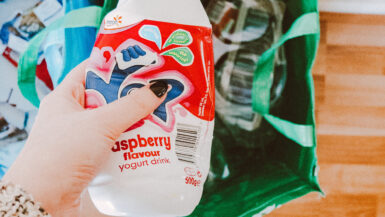In today’s world, raising eco-conscious, plastic-free kids is not only essential for the well-being of our planet, but also for instilling a sense of responsibility and awareness in the younger generation. As we face an escalating plastic pollution crisis, parents and caregivers have a pivotal role to play in guiding children towards a more sustainable lifestyle. This article delves into effective strategies to educate and involve kids in plastic-free living, touching upon topics such as mindful consumption, waste reduction, and the importance of leading by example. Join us in exploring practical tips and innovative ideas to help shape the environmentally responsible citizens of tomorrow.
Instilling Plastic-Free Habits in Children’s Daily Routines
As we strive to raise eco-conscious, plastic-free kids, it’s crucial to begin by incorporating sustainable practices into their daily routines. By making small, consistent changes, children will develop habits that contribute to a healthier environment and a more mindful lifestyle. In this section, we’ll explore effective ways to integrate plastic-free habits into various aspects of a child’s life, including hygiene, playtime, and mealtime.
Environmentally-Friendly Hygiene Practices
Teaching kids the importance of personal hygiene can go hand-in-hand with eco-friendly practices. Instead of using disposable wet wipes or plastic toothbrushes, opt for biodegradable wipes and bamboo toothbrushes. Similarly, switch to bar soaps and shampoos wrapped in paper packaging rather than plastic bottles. By making these simple swaps, children will learn the value of selecting eco-friendly products without compromising on cleanliness.
Plastic-Free Playtime
Toys play a significant role in a child’s development, and it is possible to make playtime both fun and sustainable. Choose toys made from natural materials, like wood, cloth, or metal, which are not only durable and long-lasting but also biodegradable. Encourage creative play with non-toxic, plastic-free art supplies like beeswax crayons, pencils, and recycled paper. By selecting eco-friendly alternatives, children will understand that playtime can be enjoyable without adding to the plastic waste problem.
Waste-Free Meals and Snacks
Mealtime is an excellent opportunity to instill plastic-free habits in children. Pack their lunches in reusable containers and cloth bags instead of single-use plastic bags or cling film. Utilize reusable water bottles and stainless steel cutlery to replace disposable alternatives. Additionally, involve your children in shopping for groceries by using reusable produce bags and opting for package-free, bulk items. By actively participating in these practices, kids will become more mindful of their consumption habits and the impact they have on the environment.
Promoting Green Transportation
Encouraging the use of eco-friendly transportation methods is another way to instill plastic-free habits in children. Teach them the value of walking, biking, or taking public transport to school and other activities whenever possible. This not only reduces their carbon footprint but also fosters a healthy lifestyle. As children grow up embracing sustainable transportation options, they contribute towards a cleaner, greener future.
By integrating these eco-friendly habits into a child’s daily routine, we can nurture a generation of environmentally responsible individuals who are committed to reducing plastic waste and protecting our planet. Start small, lead by example, and watch as your children grow into eco-conscious citizens.
Eco-Friendly Alternatives to Common Plastic Items for Kids
As parents and caregivers work towards raising eco-conscious, plastic-free kids, it’s essential to familiarize ourselves with sustainable alternatives to everyday items. While it may be challenging to eliminate all plastic from a child’s life, there are several eco-friendly swaps that can make a significant impact on reducing plastic waste. In this section, we’ll discuss some of the most common plastic items used by children and their environmentally-friendly counterparts, which help promote a greener future for our kids.
Biodegradable Tableware for Mealtime
Mealtime is a crucial part of a child’s day, and with the right eco-friendly alternatives, it can become a plastic-free experience. Instead of using plastic plates, bowls, and cutlery, opt for biodegradable options made from materials like bamboo, palm leaf, or wheat straw. These sustainable alternatives are not only safe for your kids but also decompose naturally once disposed of, reducing the environmental impact.
BPA-Free Silicone Feeding Accessories
When it comes to feeding accessories such as sippy cups, baby bottles, and snack containers, plastic is often the go-to material. However, silicone provides an excellent eco-friendly alternative. BPA-free silicone products are not only safe and non-toxic but also highly durable and easy to clean, making them an ideal choice for children’s feeding necessities.
Organic Cotton Clothing and Accessories
Children’s clothing and accessories are often made with synthetic materials derived from plastic, such as polyester. By choosing organic cotton clothing, parents can significantly reduce the plastic content in their kids’ wardrobes. Organic cotton is grown without the use of harmful pesticides, making it a safer and more environmentally-friendly option. Additionally, seek out reusable cloth diapers and bibs as sustainable alternatives to their disposable counterparts.
Wooden and Natural Fiber Toys
Toys made from plastic are not only harmful to the environment but can also pose safety risks to kids due to the presence of toxic chemicals. Wooden toys and those made from natural fibers like cotton or wool are excellent eco-friendly alternatives. These materials are not only sustainable and biodegradable but also promote imaginative play and often have a longer lifespan than their plastic counterparts.
Reusable Food Storage Solutions
Plastic food storage items such as snack bags, sandwich wraps, and cling film can be easily replaced with reusable solutions. Opt for beeswax wraps, silicone food storage bags, and stainless steel containers to keep your kids’ food fresh without contributing to plastic waste. These eco-friendly alternatives are not only better for the environment but also save money in the long run since they can be used repeatedly.
By replacing common plastic items with these eco-friendly alternatives, parents can instill a sense of environmental responsibility in their children while reducing the family’s overall plastic footprint. It’s essential to educate children on the importance of these swaps and explain how their choices contribute to a healthier, more sustainable future for all.
Encouraging Environmental Awareness through Fun, Educational Activities
Fostering a love for our planet and an understanding of the importance of eco-conscious living is key to raising plastic-free kids. Engaging children in fun, educational activities is a great way to encourage environmental awareness and inspire them to make sustainable choices. In this section, we will explore a variety of enjoyable activities that promote learning about the environment, conservation, and the impact of plastic waste on our planet.
Hands-On Gardening and Composting
Gardening is an excellent way to teach children about the importance of nurturing and respecting the environment. Growing their own fruits, vegetables, and flowers will help kids understand the connection between the food they eat and the natural world. Introducing composting as a part of gardening activities will further emphasize the significance of waste reduction and recycling in maintaining a healthy ecosystem.
Beach and Park Cleanups
Participating in beach or park cleanups is an eye-opening experience for children, as it exposes them to the real-life consequences of plastic waste. Working together with the community to collect and dispose of litter not only fosters teamwork and responsibility but also raises awareness of the importance of keeping our surroundings clean and plastic-free.
DIY Upcycling Projects
Upcycling is the process of transforming discarded items into something new and useful. Engaging children in DIY upcycling projects can spark their creativity while teaching them the value of repurposing and reusing materials instead of discarding them. From turning old t-shirts into tote bags to creating bird feeders from plastic bottles, the possibilities are endless.
Eco-Friendly Arts and Crafts
Organizing arts and crafts sessions with an eco-friendly twist can help children express their creativity while learning about the environment. Utilize natural or recycled materials for crafting projects, such as leaves, sticks, or old newspapers. Children can also create nature-inspired artwork or learn to make their own eco-friendly paint and playdough, fostering a deeper appreciation for sustainable living.
Documentary and Movie Nights
Watching nature documentaries or movies that focus on environmental themes can be both entertaining and educational for children. These films can spark conversations about the fragility of our planet, the consequences of plastic pollution, and the importance of adopting eco-friendly habits. Make it a family affair by hosting regular movie nights and discussing the themes and lessons learned from each film.
Eco-Themed Storytelling and Book Club
Reading and discussing books with environmental themes is another way to encourage children’s interest in eco-conscious living. Choose age-appropriate books that highlight the importance of caring for our planet and its resources. Organize a book club where children can share their thoughts and ideas on the stories they’ve read, fostering a sense of community and a shared passion for protecting the environment.
By engaging children in these fun and educational activities, parents and caregivers can inspire a lifelong commitment to environmental stewardship and plastic-free living. As children develop a deeper understanding of their role in preserving the planet, they will be more inclined to adopt eco-friendly habits and make sustainable choices throughout their lives.
Plastic-Free Lunches: Tips for Creating Waste-Free Meals
Incorporating plastic-free practices into mealtime routines is an essential aspect of raising eco-conscious children. By providing waste-free lunches, parents and caregivers can help instill a sense of responsibility and awareness of the environmental impact of their choices. In this section, we will explore a variety of tips and tricks to create plastic-free, waste-free meals that are both nutritious and sustainable.
Invest in Reusable Containers and Accessories
One of the most effective ways to reduce plastic waste during mealtime is by swapping single-use plastics with reusable containers and accessories. Consider using stainless steel lunchboxes, glass containers, and silicone food storage bags to pack your child’s meal. Additionally, opt for reusable cutlery, cloth napkins, and a reusable water bottle to further eliminate the need for disposable items.
Choose Fresh, Package-Free Foods
Selecting fresh, package-free foods is a great way to minimize plastic waste in your child’s lunch. Visit local farmers’ markets, grocery stores with bulk sections, or produce stands to purchase fruits, vegetables, and other items without unnecessary plastic packaging. Encourage your child to participate in the shopping process, teaching them the benefits of choosing package-free products.
Create Homemade Snacks and Treats
Instead of purchasing pre-packaged snacks and treats, consider making your own at home. Homemade granola bars, muffins, or trail mix can be made using bulk ingredients, reducing the need for plastic packaging. Not only will your child enjoy these delicious homemade goodies, but they will also gain an appreciation for the effort involved in creating waste-free meals.
Implement a Waste-Free Lunch Policy
Establishing a waste-free lunch policy in your household can help reinforce the importance of reducing plastic waste. Set expectations for your child to bring home any leftover food, reusable containers, and other items in their lunchbox each day. This practice will encourage them to be mindful of their waste generation and provide an opportunity to discuss ways to improve their eco-friendly habits.
Collaborate with Your Child on Meal Planning
Involving your child in meal planning can be a valuable learning experience and an opportunity to educate them about the importance of waste reduction. Work together to create a weekly menu that incorporates fresh, package-free ingredients and utilizes reusable containers and accessories. This collaboration will help your child feel invested in their plastic-free lunch journey and empower them to make eco-conscious choices.
By implementing these tips and strategies, parents and caregivers can create waste-free, plastic-free lunches that not only benefit the environment but also foster a sense of responsibility and awareness in their children. As eco-conscious habits become second nature, children will grow into environmentally responsible adults who continue to prioritize sustainable living throughout their lives.
Teaching Kids the Importance of Proper Recycling and Upcycling Practices
In our quest to raise eco-conscious, plastic-free children, it is vital to educate them about the importance of proper recycling and upcycling practices. As the saying goes, “knowledge is power,” and by teaching kids how to manage waste responsibly, we empower them to make a positive impact on the environment. In this subsection, we will delve into various techniques and activities that can help children develop a deep understanding of recycling and upcycling, and how these practices contribute to a greener, more sustainable future.
Understanding the Recycling Process
Start by explaining the basics of recycling to your children, including the different types of materials that can be recycled and how the process works. Consider using visual aids, such as videos or diagrams, to help them grasp the concept more easily. Discuss the importance of separating waste and the proper way to dispose of recyclable materials. By understanding the recycling process, children will be more inclined to take responsibility for their waste and participate in recycling efforts.
Recycling Games and Activities
Make learning about recycling fun and engaging by incorporating games and activities into the process. Create sorting games where children need to separate different recyclable materials, or organize a scavenger hunt to find recyclable items around the house. Interactive learning experiences like these help children retain information and develop a genuine interest in recycling practices.
Upcycling Projects for Creative Minds
Encourage your child’s creativity and resourcefulness by involving them in upcycling projects. Upcycling is the process of transforming waste materials or discarded items into something new and useful. Show your children how to repurpose items such as old clothing, cardboard boxes, or glass jars into decorative or functional pieces. This hands-on experience will teach them the value of reusing materials and inspire them to think twice before discarding items that could be upcycled.
Visiting Recycling Centers and Workshops
Take your child on a visit to a local recycling center or participate in recycling workshops to further their understanding of waste management practices. These firsthand experiences can be eye-opening for children, as they witness the recycling process in action and learn about the environmental impact of their waste. Additionally, visiting recycling centers can spark curiosity and open up discussions about the importance of reducing plastic waste and adopting eco-friendly habits.
Leading by Example
One of the most effective ways to instill the importance of proper recycling and upcycling practices in children is by leading by example. Demonstrate your commitment to recycling and upcycling by actively participating in these practices and involving your child in the process. Show them that you prioritize waste reduction and resource conservation, and they will be more likely to adopt these values as their own.
Teaching children the importance of proper recycling and upcycling practices is a crucial aspect of raising eco-conscious, plastic-free kids. By providing them with the knowledge, tools, and motivation to participate in waste management efforts, we can nurture a generation of environmentally responsible individuals who are committed to protecting our planet and preserving its resources for future generations.





Leave a reply